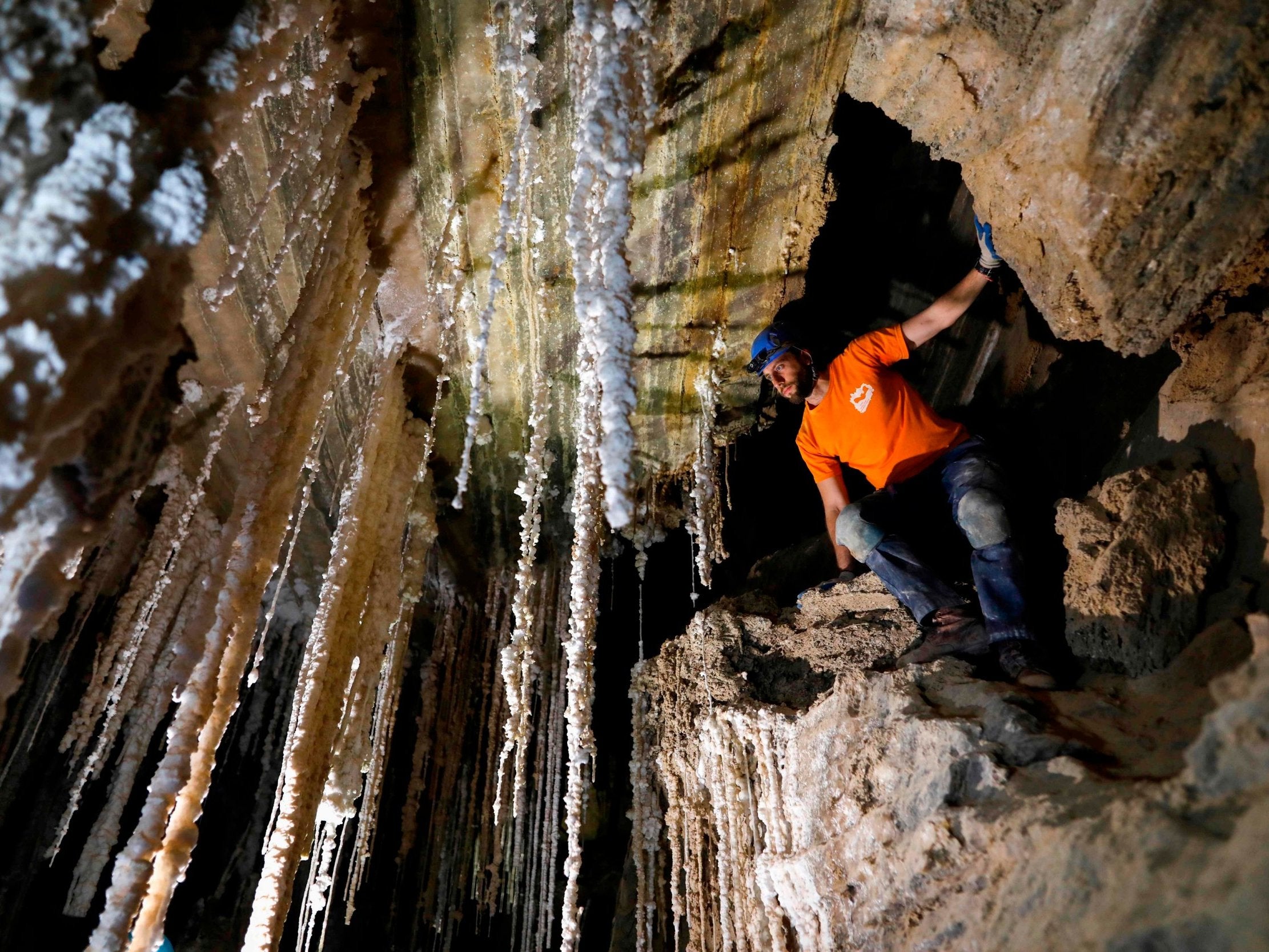Mount Sodom: World's longest salt cave discovered under Biblical landmark in Israel
Site of six-mile cave beneath mount Sodom is close to where Lot’s wife was turned into pillar of salt, according to Bible

Your support helps us to tell the story
From reproductive rights to climate change to Big Tech, The Independent is on the ground when the story is developing. Whether it's investigating the financials of Elon Musk's pro-Trump PAC or producing our latest documentary, 'The A Word', which shines a light on the American women fighting for reproductive rights, we know how important it is to parse out the facts from the messaging.
At such a critical moment in US history, we need reporters on the ground. Your donation allows us to keep sending journalists to speak to both sides of the story.
The Independent is trusted by Americans across the entire political spectrum. And unlike many other quality news outlets, we choose not to lock Americans out of our reporting and analysis with paywalls. We believe quality journalism should be available to everyone, paid for by those who can afford it.
Your support makes all the difference.Cave explorers in Israel believe they have discovered the world’s longest salt cave, larger than the previous record-holding cave in Iran.
The Malham cave, first partially mapped in the 1980s, is now known to stretch for over 10 kilometres (6.25 miles), through Mount Sodom, Israel’s largest mountain.
The cave is adorned with glittering stalactites and stalagmites formed from salt crystals, and it is close to where the Bible claims Lot’s wife was turned into a pillar of salt upon the “sight of God”, who had descended to Earth to bring destruction upon Sodom and Gomorrah.
Indeed, the cave’s main outlet is close to a salt pillar nicknamed “Lot’s wife,” after the biblical character.
Amos Frumkin, the founder and director of the Hebrew University’s Cave Research Centre, mapped the first five kilometres in the 80s, but two years ago, Israeli spelunker (cave diver) Yoav Negev, the founder of the Israeli Cave Explorer’s club, decided he wanted to complete the exploration.
Last year a team of eight European and 20 local spelunkers spent 10 days mapping the cave, and then a second 10-day expedition this year with 80 local and international spelunkers finished measuring and mapping the cave with lasers.
Boaz Langford, a researcher at the university’s Caves Research Centre, and Antoniya Vlaykova, a Bulgarian cave explorer from the European Speleological Federation, led the expedition.
“What’s unique about this cave, as opposed to other salt caves in the world, is that it’s the longest in the world,” Mr Langford said.
They plan to publish the complete map of the cave in a professional publication in the coming months.
One of the chambers of the cave has been named the “Wedding Hall” due to its spectacular salt stalactites.
There is no official record for the longest salt cave, and such designations are generally decided by consensus among cave researchers after an underground chamber is mapped and published.
Iran’s Namakdan cave, which is about 6 kilometres (4 miles) in length, was identified as the longest salt cave after a study by Czech and Iranian scientists in 2006.
The relationship between the Malham cave and Mount Sodom is closely linked, as the mountain is essentially a large salt block, formed by the shifting of the Earth’s plates at the northern end of the 4,000-mile Afro-Arabian Rift Valley.
The tectonic activity also created the Dead Sea. Over millions of years successive flooding of the deep depression lay down thick layers of salt.
The mountain is covered by a thin layer of rock, but when it rains, the water trickles down into the salt layer eventually carving out the caves and forming the stalactites and stalagmites.
Efraim Cohen, one of the Hebrew University cave explorers, described the process of locating the cave’s entrances from the surface, rappelling down into surface shafts, squeezing through tight passages, and measuring each of the cavern’s serpentine branches with lasers.
Despite the difficult environment, he said the cave’s splendour makes it worth it.
“All the stalagmites and stalactites, their beauty, their colour — they’re really white, they’re shining, they’re amazing,” he said.
Radiocarbon dating of wood fragments found inside the cave have helped date its formation to around 7,000 years ago, making it extremely young by speleological standards.
“The reason why it’s so young is because it’s made of salt,” Professor Frumkin said.
“Limestone caves are much slower to form. They are usually much older. But this one is developing very fast so it’s one of the youngest caves in the world.”
Additional reporting by Reuters
Join our commenting forum
Join thought-provoking conversations, follow other Independent readers and see their replies
Comments